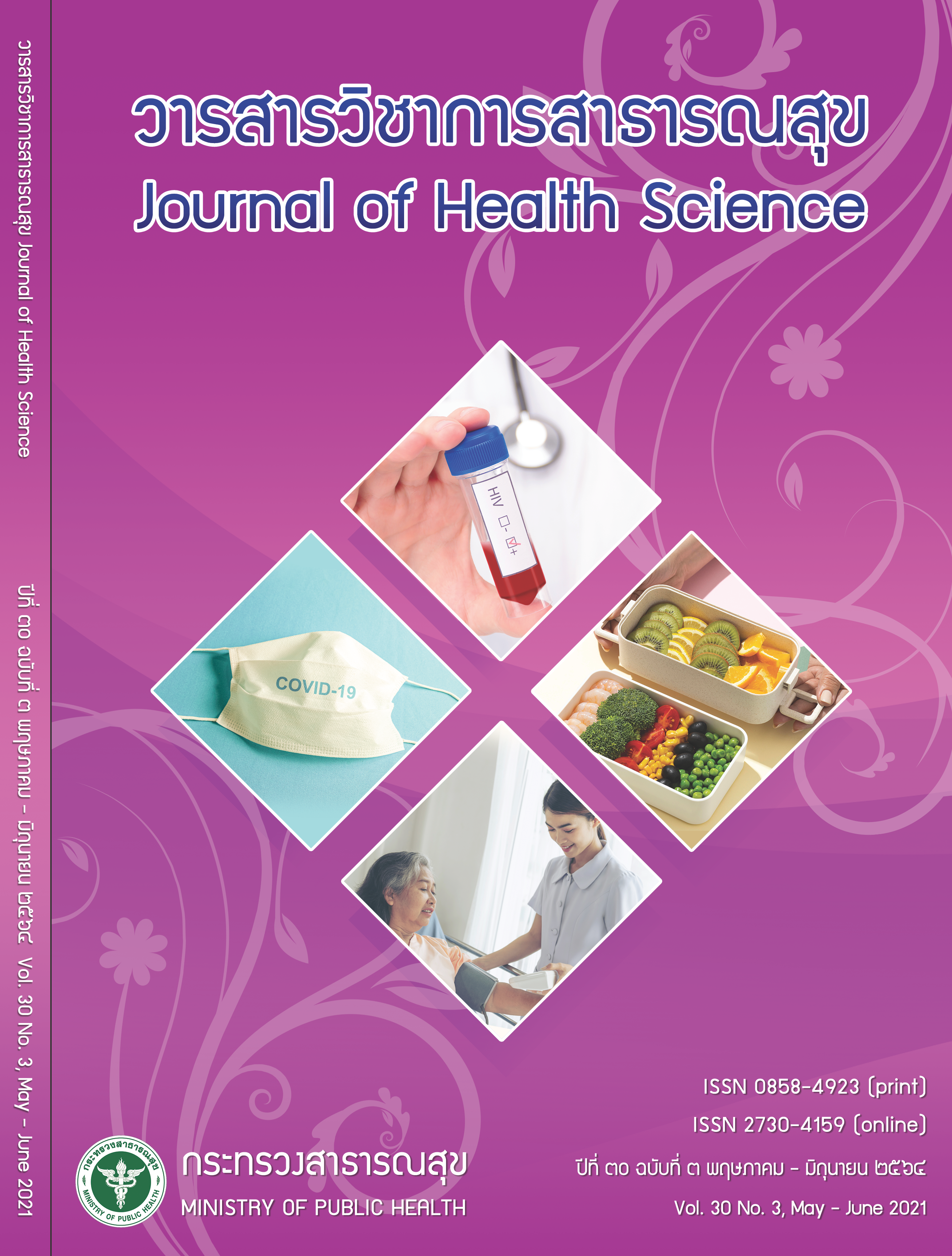Development of Good Health Promotion Model that Integrated with Buddhist Ways for the Prevention and Control of Non-communicable Diseases
Keywords:
model development, Buddhist ways, prevention and control, non-communicable diseasesAbstract
The objectives of this research was to develop and assess the effectiveness of a health promotion model that integrated with Buddhist ways to prevent and control of non-communicable diseases. It was conducted as a two group pretest-posttest design. The samples were 99 patients with uncontrolled diabetes and/or hypertension, divided into two groups: the study group (50 patients) managed by the model, and the control (49 patients) who were managed by routine care. Data were collected using mixed method, both quantitative and qualitative approaches. The research tools were: (1) the good health promotion program integrated with Buddhist ways named in Thai as 3 Sor, 3 Orr, 1 Nor from which was comprised of pray, meditation, Buddhist dialogue, nutrition, exercise, emotion, and biological clockwise daily activities with Buddhist integration; (2) health assessment form; (3) self-report manual; (4) the knowledge test; (5) the happiness test; (6) the satisfaction questionnaire; and (7) group discussion and in-depth interview guidelines. The KR20 of the data collecting tools no. 4 was 0.8. The Cronbach’s alpha coefficients of the data collecting tools no. 5 and 6 were 0.85 and 0.84, respectively. Quantitative data were analyzed using descriptive statistics, paired t-test and independent t-test; and the qualitative data by using content analysis. The results revealed that the model consisted of 3 components: (1) the good health promotion program integrated with Buddhist ways, (2) self-reporting towards the program, and (3) monitoring, supporting, and empowering by the health team; and it was found that the study group had lower average in weight, waist circumference, BMI, blood pressure and blood sugar levels compared to those before the study. The knowledge and happiness scores were significantly increased (p<0.05). Moreover, the study group had highest level of satisfaction on the model. To compare between the 2 groups, the study group had lower average in weight, waist circumference, BMI, blood pressure and blood sugar levels than those of the control group (p<0.05). Thus, the model should be expanded to other areas and be used for the treatment and care of patients with other chronic NCDs.
Downloads
Downloads
Published
How to Cite
Issue
Section
License

This work is licensed under a Creative Commons Attribution-NonCommercial-NoDerivatives 4.0 International License.







